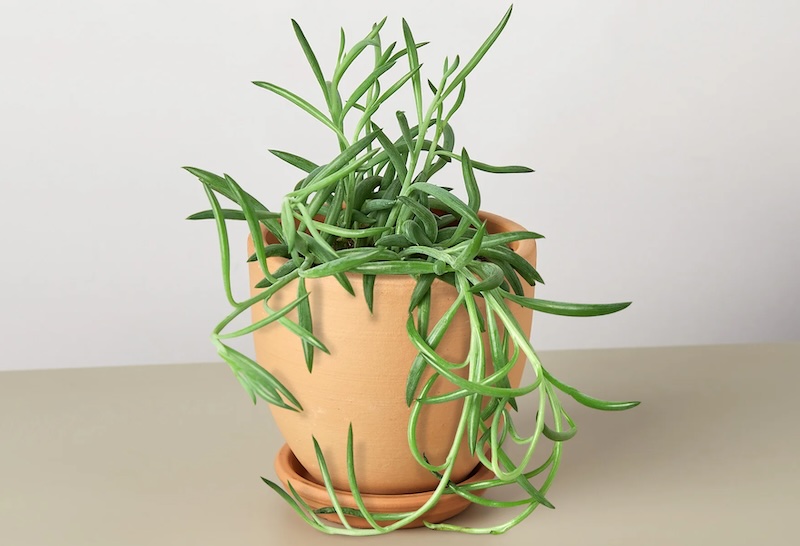Senecio are succulents that thrive in desert climates where the soil tends to drain fast and have poor fertility. When growing senecio plants at home, the key is to replicate these conditions using well-drained soil, low in nutrients. The root systems of most senecio are shallow and relatively slow growing, allowing a plant to grow in the same pot for its whole life.
Senecio plants grow well in plastic pots, as long as they have plenty of drainage. Pair the pots with saucers to protect floors and carpets from any excess leakage after watering. Senecio also grows quite well in shallow terra cotta bowls or small succulent pots. Terra cotta is porous and allows greater air circulation around the roots compared to plaster, lessening the risk of overwatering.

Potting Senecio
When your senecio is ready to be repotted, increase the pot size by only one or two sizes to keep the roots slightly pot-bound. Because its root system is shallow, senecio thrives in shallow containers with a bowl shape. Feel free to use a decorative container or a hanging basket.
Gently tip the plant out of the old pot so that the rootball stays together. Put some fresh potting mix in the bottom of the new pot before positioning the rootball, and then carefully fill in around the outside of the rootball with potting mix. Gently poke the soil down so that no air pockets remain around the rootball. Water your plant well, thoroughly soaking the potting mix. This also helps remove any remaining air pockets. Watering in a sink or bathtub allows you to completely soak the soil without having water run off onto floors or carpets.
Repotting Senecio
Repotting is not required often as senecios grow best when they are slightly root-bound and will be happy in the same pot for years. However, the plant often benefits from fresh soil every few years. To refresh the soil, gently take the plant out of its container and gently and lightly prune around the edges and bottom of the rootball. Clean the pot or hanging basket thoroughly to remove any pests or diseases. Plant the senecio in the freshly cleaned pot using a new potting mix.
Repotting may also be necessary if your plant becomes overwatered and its health starts to decline. Take the plant out of the pot to allow the rootball time to dry before repotting it in a pot with better drainage and fresh potting mix. The rootball can survive out of a pot and may take a few days to dry sufficiently.
Best Soil For Senecio
Potting mixes formulated for succulents and cacti are the best potting soils for senecio. Typically these mixes have a high volume of sand and/or perlite to lighten the weight of the soil and improve drainage. If using an all-purpose potting soil, mix in sand or perlite at a ratio of 1:1. To make a homemade succulent mix, mix 1 part compost with 1 part sand and 1 part grit or perlite. Top dress the soil with horticultural grit (very fine pea gravel works as well) to keep the stems of senecio dry.

Senecio Drainage
Proper drainage of the pot and potting mix is essential for healthy root growth. Many senecios are grown in hanging baskets to highlight their trailing stems. The bottom of the pot must have drainage holes, ideally with an attached saucer that can be removed if needed. The best way to water a hanging basket is in the sink or bathtub where the water can be left to drain fully before rehanging.
Senecios planted in terra cotta or plastic pots also require plenty of drainage holes on the bottom. Use a plastic drip tray under the pot to catch any runoff while watering. Never let the plants sit in a saucer or cache pot full of water. The excess moisture will eventually rot the roots and stems, causing growth issues.
 |
Author Alison Cotsonas - Published 12-15-2023 |
